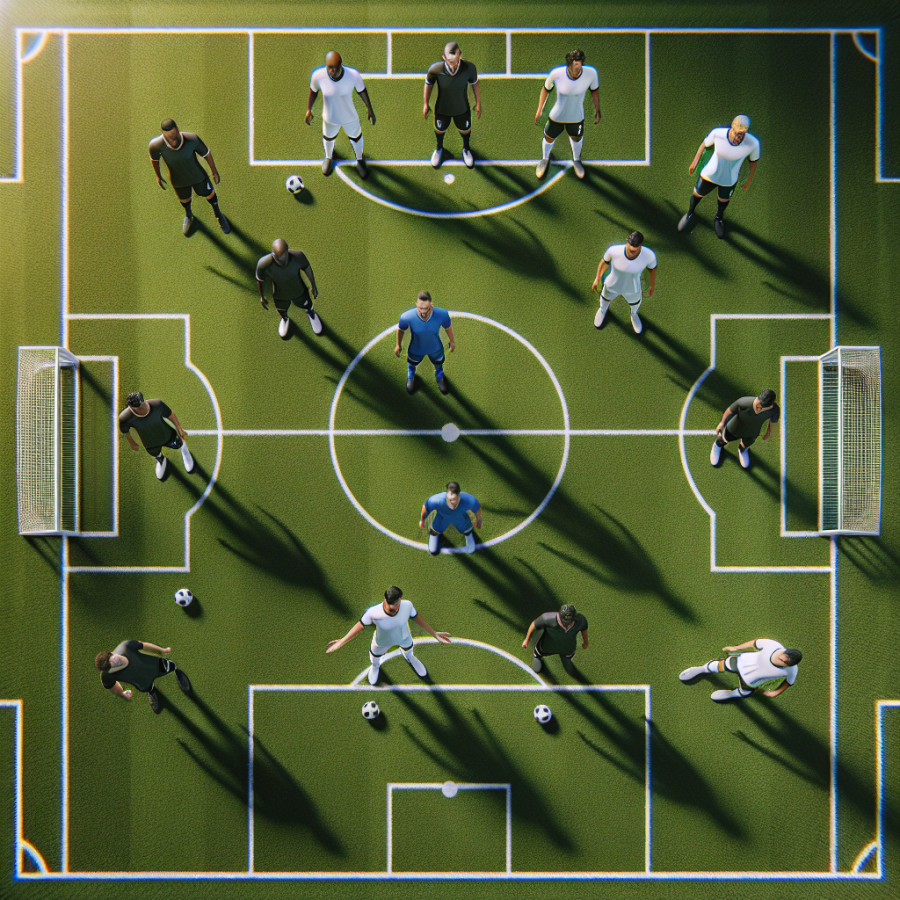Assessing Your Skills for the Ideal Soccer Position
Understanding your unique skills can have a significant impact on identifying the ideal soccer position for you. It's crucial to note that each position requires a different set of skills and qualities. Therefore, it's valuable to assess what you're naturally inclined to do on the field to find the perfect position that suits your style.
Firstly, consider your ability to control and manipulate the ball under challenging conditions. If you have impressive ball handling skills, you may thrive in a midfield position. Midfielders typically require superior ball control as they're responsible for controlling the game's pace and distributing the ball to the strikers. On the contrary, if your strengths lie more in intercepting the ball or blocking attempts on goal, then a defensive role might be a better fit.
Secondly, being able to make accurate passes is a crucial skill for any football player. However, if passing and strategic plays are your main strengths, you may make an excellent midfielder. Midfielders act as the connection between defenders and forwards, making them crucial for building plays and setting up goals. Nevertheless, accurate passing is also a valuable asset for defenders, as they then have the ability to distribute the ball efficiently and commence new plays.
Thirdly, evaluate your scoring proficiency. Are you a natural finisher? If you're remarkably good at finding the back of the net, a striking position could be your forte. Strikers are often the team's main goalscorers and take the most shots on goal, so high precision and shooting power are necessary for such players.
Next, consider your pace and stamina. If your speed is second to none and you can run for an extended period without showing signs of fatigue, you could be a great fit for a winger or wing-back role. These positions demand a lot of running along the sidelines, crossing balls into the box, and helping out in defense.
Another critical factor to consider is your decision-making skills under pressure. This is particularly essential for goalkeepers who often have to make split-second decisions that could significantly impact the game's result. Goalkeepers also require excellent hand-eye coordination and an ability to predict the other team's moves.
Leadership and communication skills also play a role in determining your ideal position. Centre-backs and goalkeepers are often required to guide their team and manage the defense line, making these the perfect roles for someone comfortable with directing others.
Finally, it's crucial to consider your defensive aptitude.
Read also:
Revolutionizing Sports Betting: The Rise of Trading AI
Unraveling the Intricacies of Different Soccer Positions
Understanding different soccer positions can seem like a complicated task for beginners. To fully appreciate this beautiful game and to make informed decisions regarding the position best suited for you, it's essential to untangle some crucial nuances associated to each soccer position.
The soccer field can be divided into four primary areas, each inhabited by different positions—goalkeepers, defenders, midfielders, and forwards. Each position has its unique demands, strategic importance, and skill requirements.
1. Goalkeeper: As the last line of defense and the first line of attack, a goalkeeper's role demands quick decision-making, impressive agility, and excellent ball-handling skills. A good keeper needs to be brave, tenacious, and unafraid of diving into onrushing players. This position suits individuals with strong defensive instincts and excellent vision of the field.
2. Defenders: Located just in front of the goalkeeper, defenders play a crucial role in thwartsing the opponents' attacks. With roles ranging from center-backs to full-backs and wing-backs, defenders require agility and physical robustness. They also need to maintain positional discipline, understand the dynamics of team defense, and be adept at winning one-on-ones and aerial battles.
3. Midfielders: Often termed as the team's engine, midfielders need to possess remarkable stamina, as they are constantly moving up and down the field. They're responsible for bridging the gap between defense and attack, often initiating team plays, and are expected to have exceptional ball skills, vision, creativity, and technical abilities. Central midfielders should excel at controlling the game's tempo and breaking up opposition play, while wide midfielders require a good crossing ability and speed.
4. Forwards: These are the glory grabbers of the team, often scoring the goals and driving the attacking play. They must have a killer instinct, speed, agility, and the ability to keep a cool head amid pressure. Players with exceptional dribbling, ball control, and finishing skills are usually the best fit for this position.
Different soccer positions also have varied responsibilities during offensive and defensive plays. For example, while defenders primarily focus on blocking the opponents' attacks during defensive play, they are also expected to participate in attacking moves by launching precise long balls or even joining the attack during set-pieces in offensive play.
Players should try different positions to understand where their strengths lie, and where they can contribute the most to the team's success.





